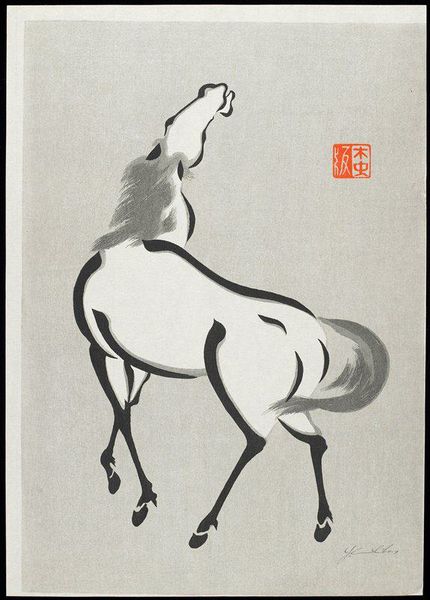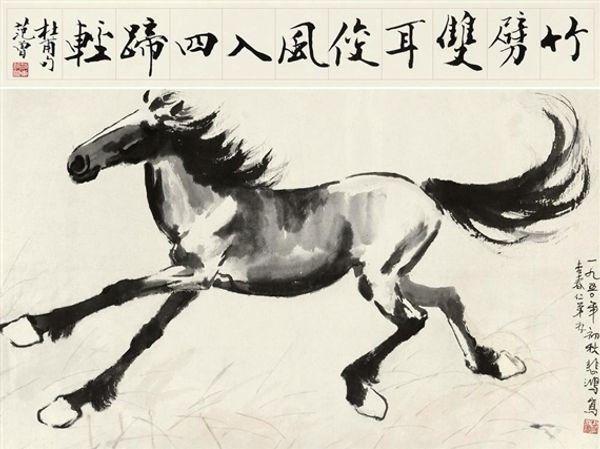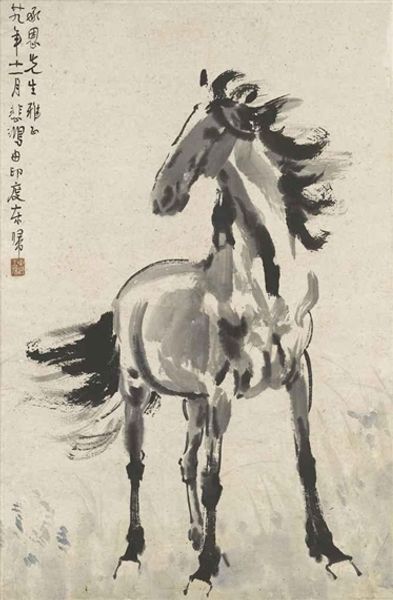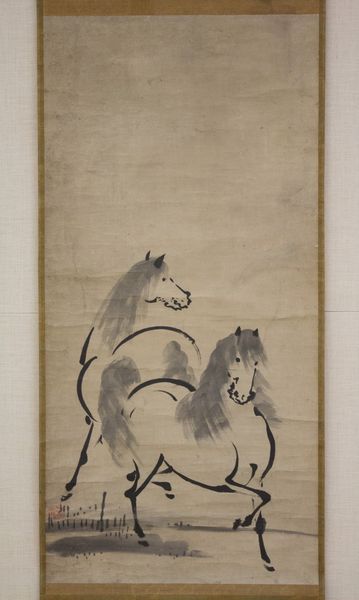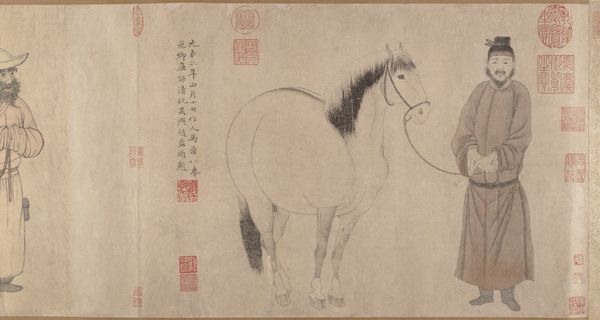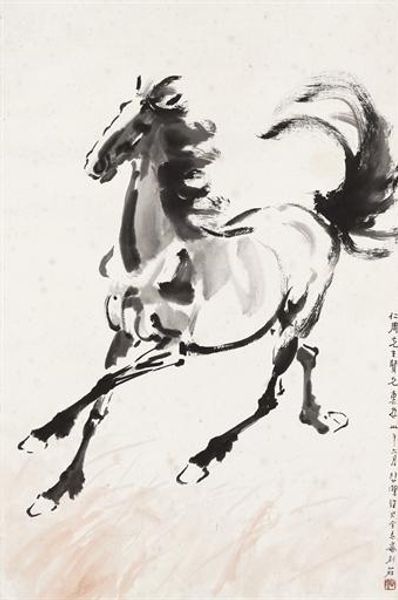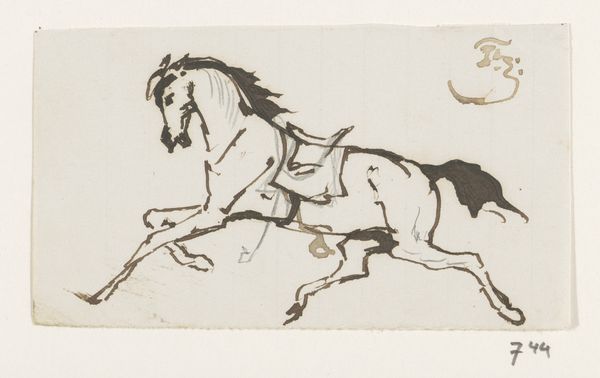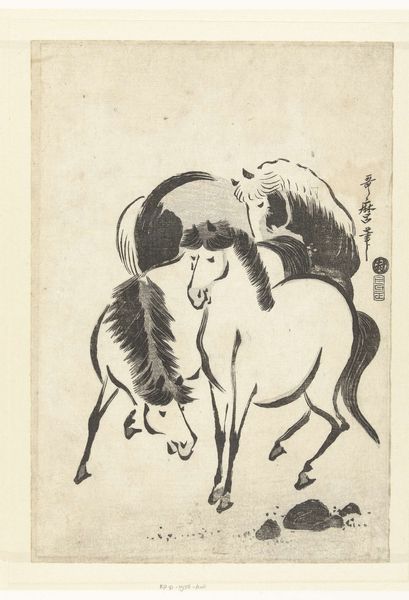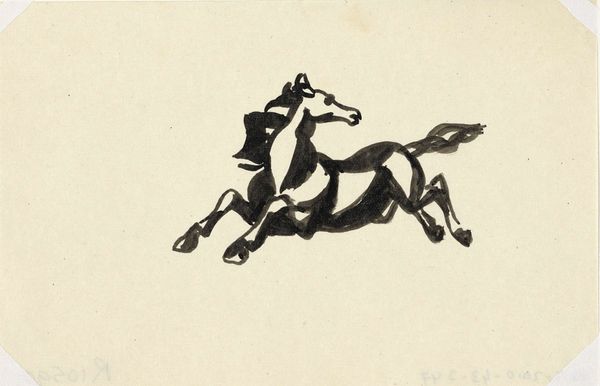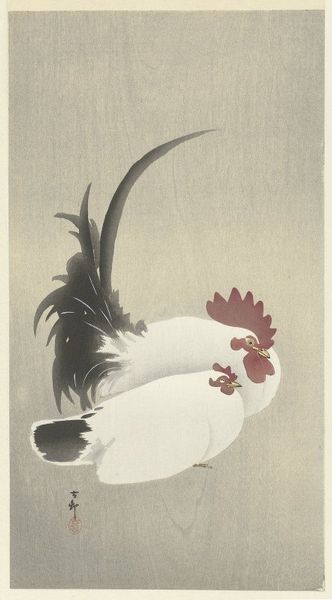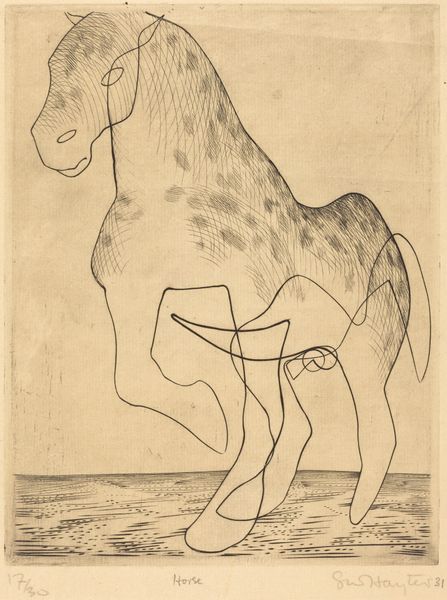
Dimensions: 14 x 10 in. (35.5 x 25.4 cm) (image)
Copyright: No Known Copyright
Urushibara Mokuchū created this woodblock print of a horse, sometime in the early to mid-twentieth century. Urushibara was a master of traditional Japanese techniques and was also deeply influenced by his travels in Europe. Here, we see a horse rearing up on its hind legs, rendered with bold, calligraphic lines. Horses in art often symbolize power, freedom, and virility. But in the context of early 20th century Japan, as it reckoned with Westernization and its own imperial ambitions, this image takes on added layers of meaning. Is this horse a symbol of Japan's strength, or perhaps its struggle to balance tradition with modernity? Consider, too, the artist's own position. Urushibara navigated both Japanese and European art worlds, and in this print, we can see a fusion of Eastern and Western aesthetics. The monochromatic palette and simplified forms speak to Japanese traditions, while the dynamic composition hints at Western influences. This print invites us to reflect on identity, cultural exchange, and the artist’s negotiation of his own place in a rapidly changing world.
Comments
No comments
Be the first to comment and join the conversation on the ultimate creative platform.
